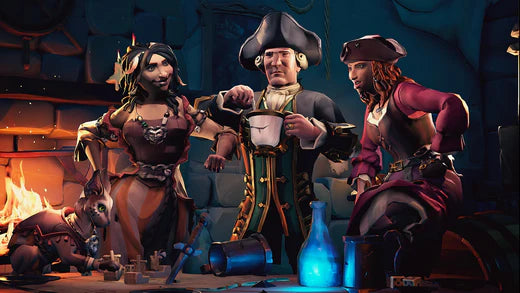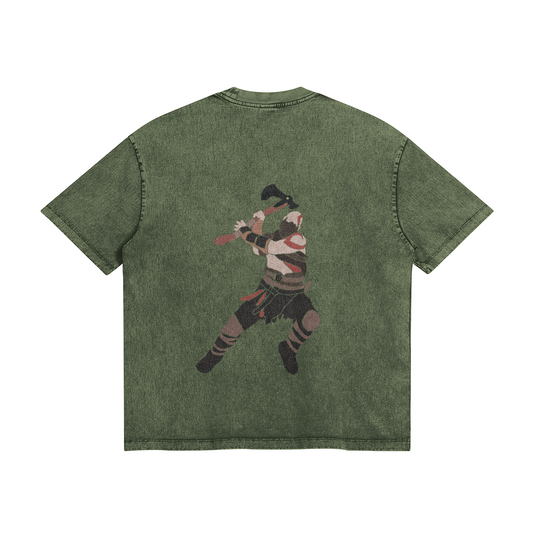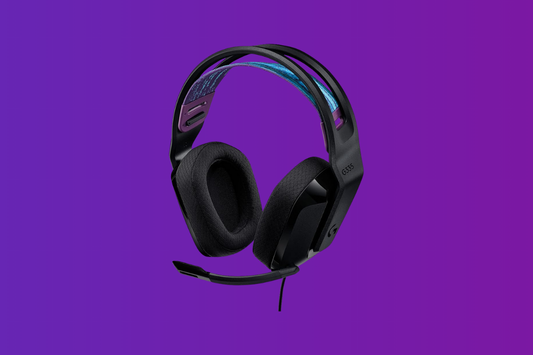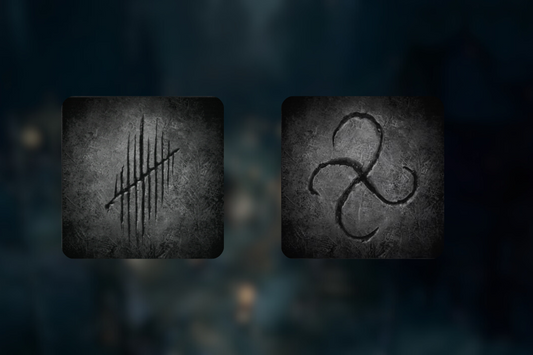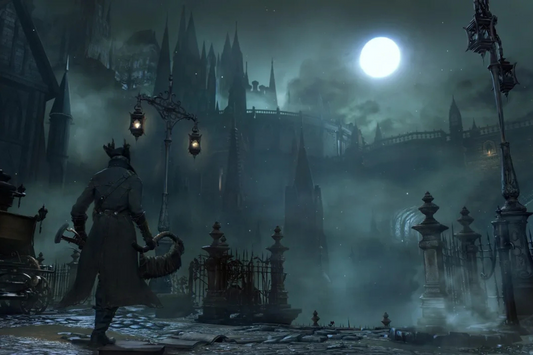Few themes captivate gamers quite like the swashbuckling allure of pirates. The open seas, hidden treasures, and the thrill of battle have been brought to life by games that embrace the open-world pirate adventure. Two notable titles that explore this concept are Sea of Thieves by Rare and the upcoming Skull & Bones by Ubisoft. Each offers its own interpretation of the pirate experience, blending exploration, naval combat, and multiplayer interactions in vast, open worlds.
This article delves into what makes pirate-themed games so appealing, examines how these two titles differ, and explores what the future may hold for open-world piracy.
The Timeless Appeal of Pirate-Themed Games
Pirates have long been a fixture of popular culture, blending history with myth in a way that stirs the imagination. Open-world pirate games take this romanticized image of piracy and turn it into an interactive experience, allowing players to:
- Explore Vast Oceans: The open seas provide a sense of freedom and discovery, with islands, hidden treasures, and uncharted waters waiting to be explored.
- Engage in Epic Naval Battles: From commanding a fleet to outmaneuvering rivals in ship-to-ship combat, pirate games capture the adrenaline rush of maritime warfare.
- Create Unique Pirate Legends: Whether through multiplayer interactions or narrative-driven gameplay, players can craft their own tales of adventure and plunder.
Games like Sea of Thieves and Skull & Bones embody these elements while bringing their own innovations to the genre.
Sea of Thieves: A Multiplayer Sandbox of Pirate Adventures
Released in 2018 by Rare, Sea of Thieves is a multiplayer open-world pirate game that emphasizes cooperation, exploration, and player-driven storytelling. Its vibrant art style and approachable mechanics make it one of the most accessible pirate games available.
Core Features of Sea of Thieves:
1. A Shared World
At the heart of Sea of Thieves is its shared multiplayer world, where players can team up or compete against each other. Every session is unpredictable, as encounters with other crews can lead to alliances, betrayals, or chaotic naval battles.
2. Emergent Gameplay
Unlike traditional narrative-driven games, Sea of Thieves encourages emergent storytelling. Players are given the tools to create their own adventures, from treasure hunts and skeleton battles to ambushing rival ships.
3. Customization and Progression
Players can customize their ships, characters, and weapons, creating a personal identity within the game’s world. Progression is tied to earning reputation with factions, such as the Gold Hoarders or Order of Souls, rather than traditional RPG leveling.
4. Expansions and Seasonal Updates
Rare has continually supported the game with free content updates, introducing new mechanics, enemies, and storylines. The addition of PvE encounters like the Kraken and Megalodon has further enriched the game’s sandbox.
The Unique Appeal of Sea of Thieves:
- Social Gameplay: The cooperative nature of the game shines brightest when played with friends. From raising sails to firing cannons, teamwork is essential for success.
- A Lighthearted Tone: The game’s colorful aesthetic and humorous tone make it a joyful experience, even in defeat.
Skull & Bones: A Realistic Take on the Pirate Fantasy
Ubisoft’s Skull & Bones takes a darker, more grounded approach to open-world piracy. While it has faced delays and evolving development since its announcement in 2017, the game promises a gritty portrayal of piracy during the Golden Age.
Core Features of Skull & Bones:
1. Naval Combat Focus
Unlike Sea of Thieves, which combines on-foot and ship-based gameplay, Skull & Bones centers heavily on naval combat. Players will command their ships in battles that emphasize strategy, positioning, and resource management.
2. Customizable Ships
The game allows players to design their ships to suit their playstyle, from swift vessels ideal for ambushes to heavily armed warships built for head-on confrontations.
3. Dynamic World and Economy
Ubisoft has teased a living world where resources, trade routes, and rival factions create a dynamic economy. Players will compete for dominance in a world shaped by their actions.
4. PvPvE Gameplay
Similar to Sea of Thieves, Skull & Bones will feature a shared multiplayer environment. However, it emphasizes player-versus-player interactions within a world populated by AI factions and events.
The Unique Appeal of Skull & Bones:
- Realism and Grit: The game’s focus on historical authenticity and darker themes sets it apart from the whimsical tone of Sea of Thieves.
- Strategic Depth: Naval combat promises to be more tactical, rewarding players who master positioning and timing.
Comparing the Two: Sea of Thieves vs. Skull & Bones
While both games share the core concept of open-world piracy, their execution differs significantly:
|
Feature |
Sea of Thieves |
Skull & Bones |
|
Tone |
Lighthearted, vibrant, and humorous |
Gritty, realistic, and darker in theme |
|
Gameplay Focus |
Cooperative multiplayer and emergent gameplay |
Naval combat with strategic depth |
|
Customization |
Ships, characters, and cosmetics |
Ships and playstyle-specific builds |
|
PvP and PvE |
Equal emphasis on PvP and PvE |
PvPvE with a focus on competitive elements |
|
World Design |
Shared open-world sandbox |
Dynamic economy and AI-driven systems |
These differences cater to distinct player preferences. Sea of Thieves is ideal for those seeking a laid-back, social experience, while Skull & Bones aims to deliver a more intense, combat-oriented adventure.
The Future of Open-World Pirate Games
As technology and player expectations evolve, pirate games are poised to grow in scope and complexity. Here are some trends and possibilities:
1. Deeper Storytelling
While open-world pirate games have historically leaned on sandbox gameplay, future titles may integrate richer narratives. Expansive story arcs, character-driven quests, and moral choices could enhance immersion.
2. Procedural Exploration
The open seas are a perfect canvas for procedural generation, allowing for endless islands, shipwrecks, and hidden treasures to discover. This would keep the gameplay fresh and unpredictable.
3. Enhanced Multiplayer Systems
The social dynamics of pirate games could evolve with features like player alliances, territory control, and large-scale naval wars. Persistent worlds shaped by player actions would deepen engagement.
4. Virtual Reality Integration
The immersive potential of VR could bring pirate adventures to life like never before. Imagine steering a ship, firing cannons, and exploring islands in first-person VR.
Why Pirate Games Endure
The enduring appeal of pirate-themed games lies in their ability to combine freedom, adventure, and danger. Whether players are seeking camaraderie on the high seas or the thrill of outmaneuvering enemies, these games capture the spirit of exploration and risk that defines the pirate fantasy.
Conclusion
Games like Sea of Thieves and Skull & Bones showcase the versatility of the pirate genre, offering vastly different takes on open-world piracy. While Sea of Thieves excels as a social sandbox with whimsical charm, Skull & Bones promises a more tactical and competitive experience. Together, they highlight the rich potential of pirate games to immerse players in a world of high-seas adventure.
As these titles continue to evolve, one thing is certain: the call of the open sea and the promise of buried treasure will always draw gamers back to the world of pirates. Whether you’re hoisting the sails with friends or charting your course to riches, the pirate’s life remains one of gaming’s most exciting adventures.

